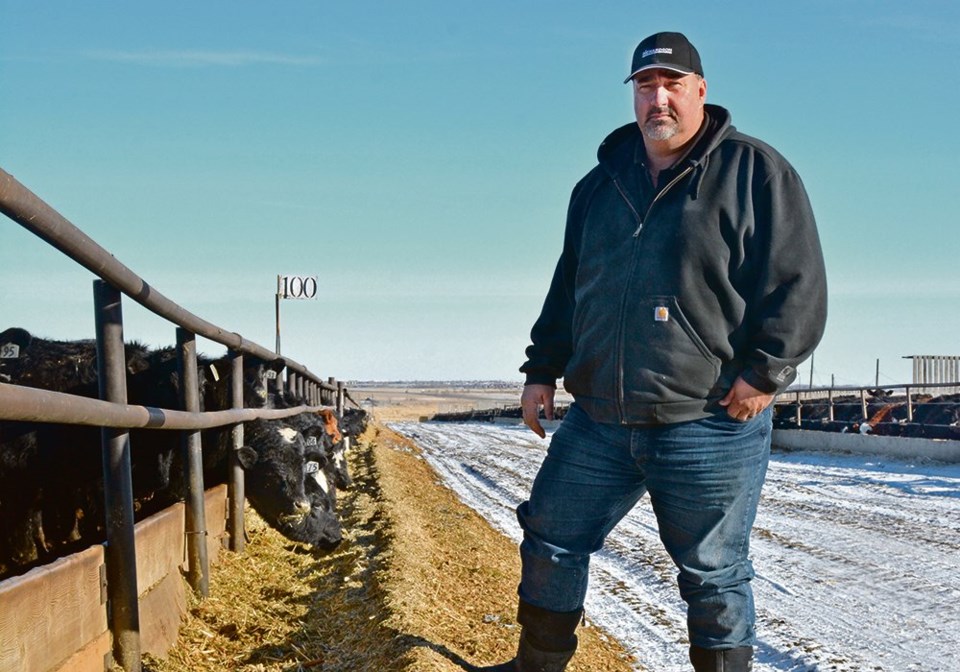WESTERN PRODUCER — Western Canadian feedlots are struggling to acquire American corn, compounding ongoing supply chain problems.
Last year’s drought has caused a feed shortage from traditional Canadian suppliers, and while corn is plentiful in the United States, transportation north continues to be pinched by logistics issues caused by the pandemic.
“It’s devastating,” said Ryan Kasko, chief executive officer of Ceylon Gap Feeders, a 20,000 head feedlot operation based in southern Saskatchewan.
Related story:
Train shipments have been delayed up to three weeks, leaving feeders with little left but to try to reformulate rations to stretch out corn supplies.
“There is a tremendous volume booked to come into southern Alberta,” said Kasko, who also operates feedlots in Alberta. “I don’t think the railroads were ready to deliver that volume and then there are the challenges with some of the vaccination mandates for people crossing the border.”
The demand for corn feed is also exacerbated by more producers looking to winter cattle in feedlots, said T Bar Cattle Co. owner Brad Betcker.
His operation, which he runs with his wife, Lisa, has taken in 20 percent more cattle this year and turned away 10,000 head due to lack of capacity.
In a normal year, Betcker said he could order barley and have it delivered in short order.
However, that’s proved to be something of a luxury this year, as it has for many other products.
There are also supplies of dried distillers grains, but that, too, is facing shipping issues due to the smaller loads that are moved by rail. As well, it’s feared that disruptions to trucking from new vaccine mandates for drivers on both sides of the border will make the existing labour shortage worse.
“The corn is coming in but it’s coming just in time,” said Betcker. “You just can’t order corn one day and get it the next.”
The once massive silage pile at his operation is starting to shrink along with the piles of dried distillers grains and corn used in the rations his operation spreads out twice a day.
“There is no other grain to buy,” said Betcker. “There’s nothing out there. You can’t buy a load of barley.”
That goes for wheat as well.
“Nobody is going to sell you feed wheat unless there is something wrong with it,” he said.
Betcker said he’ll be able to get through the winter because his contracted supply of corn and most of his distillers grain has been delivered and his operation is small and nimble enough to manage. But feedlots that use many times the feed he uses will feel the corn supply pinch far more.
“I don’t finish cattle here, so I only use about eight to 10 Super B loads a month,” said Betcker. “Some of those (bigger) guys will use 25 loads a day.”
Kasko said he hopes the deliveries will start to catch up with the orders soon.
“CP Rail has been taking a pretty good interest in trying to find some solutions. At the highest levels at CP, including the CEO, they have allocated more trains to bringing feed into the West,” he said. “That’s really encouraging if they can do it. The question is if they can execute on it.”
If they can, Kasko believes demand can be met within a month but warned a blizzard or some other disruption could change things quickly and the need will last until the next harvest.
Janice Tranberg, Alberta Cattle Feeders Association president, said corn is starting to now move regularly into the province.
“The biggest issue is that we don’t have a buffer. A lot of the feedlots right now are just at the point of going shipment to shipment,” she said. “They get enough in the bins to last them three, four, five days — whatever it would be — and then if the next shipment is delayed, they are scrambling again.”
That’s causing stress within the industry that’s operating without any reserves.
“It’s hard to predict when we’re going to get that buffer because at this point, it’s just really about stabilizing supply and making sure we can get through,” she said.
It’s an issue felt by operations large and small across Alberta, said Tranberg.
Will Lowe, president of the Saskatchewan Cattle Feeders Association, echoed the sentiment that feedlots are operating on razor-thin supply margins with little to no capacity to pivot.
“It’s the end of January and we have five, six months before we’re even looking at new crops,” said Lowe.
“We’re going to rely on the U.S. to get us through here with the corn and we’ve got a lot of winter, a lot of time left to go.”
Lowe anticipates the situation will cause volatility in the feeder market until feed supplies become more stable.
“It’s hard to know what the future holds but we’re into the scenario we’re in right now for a while,” he said.




